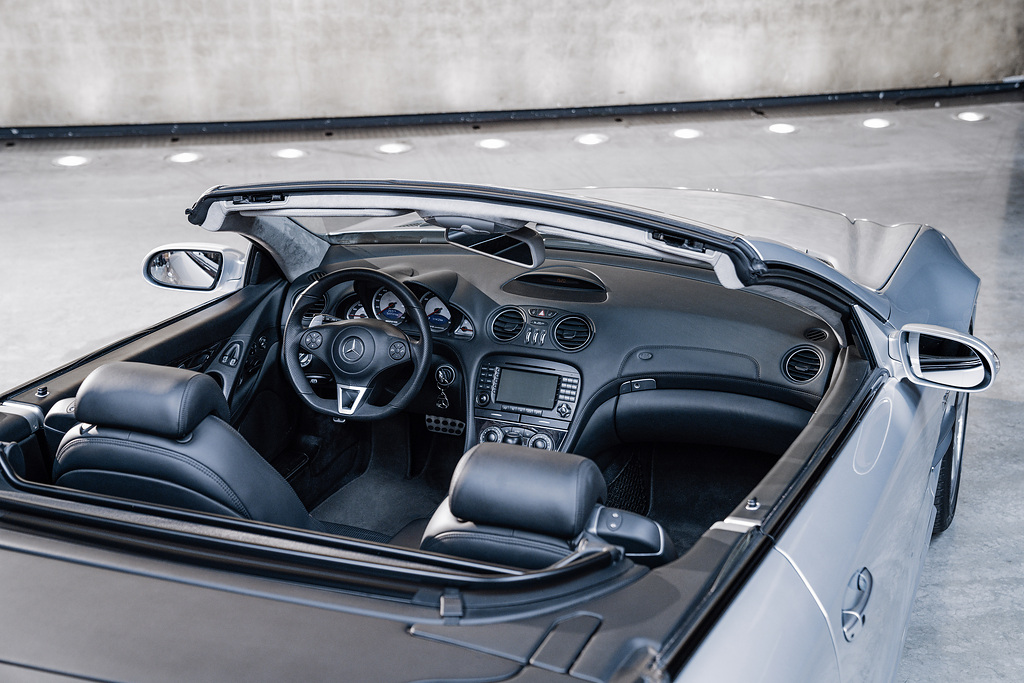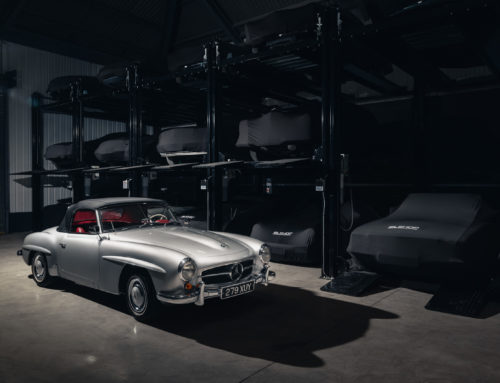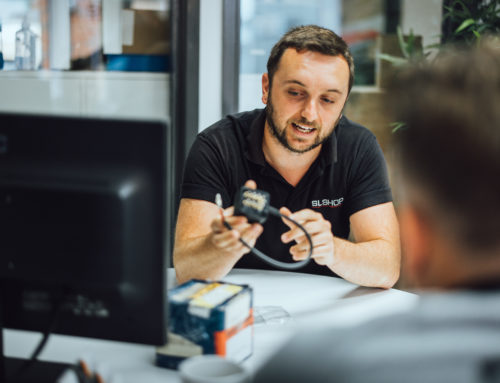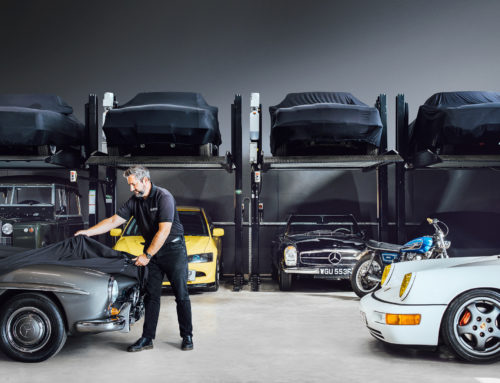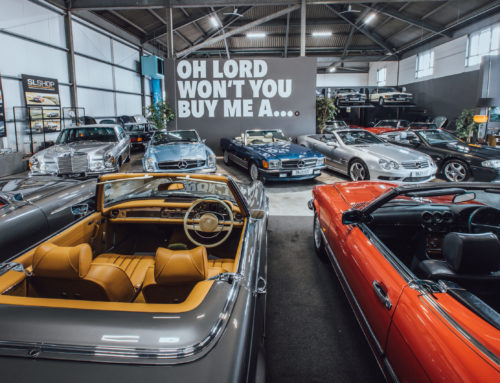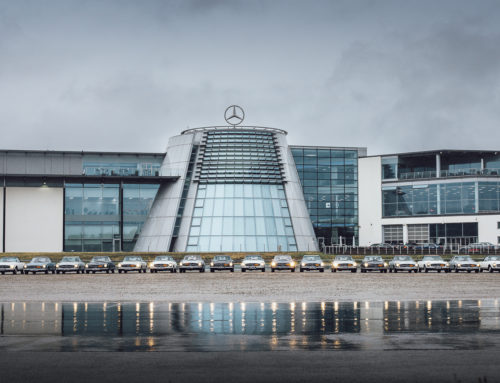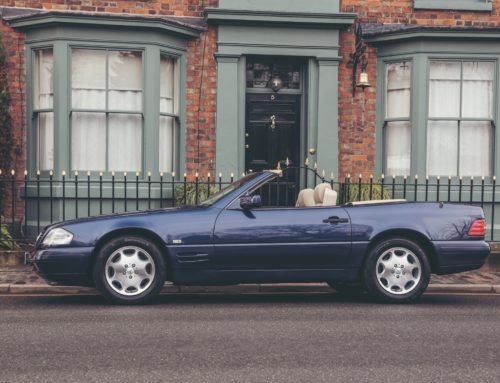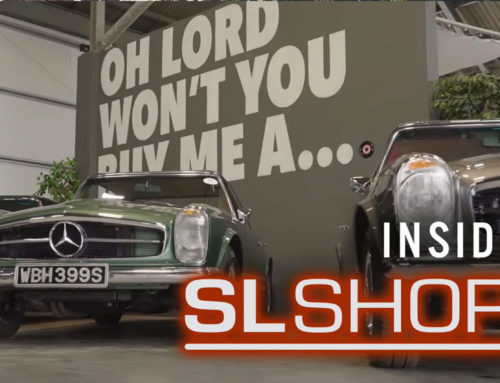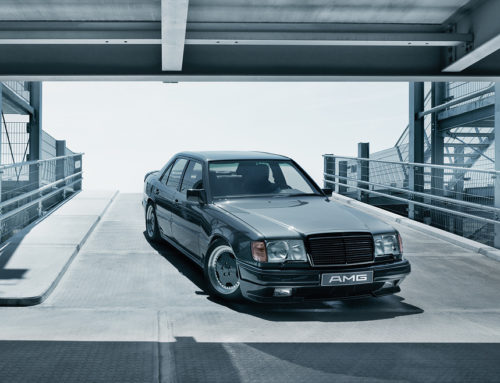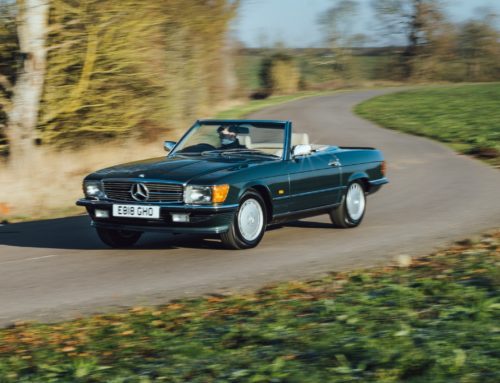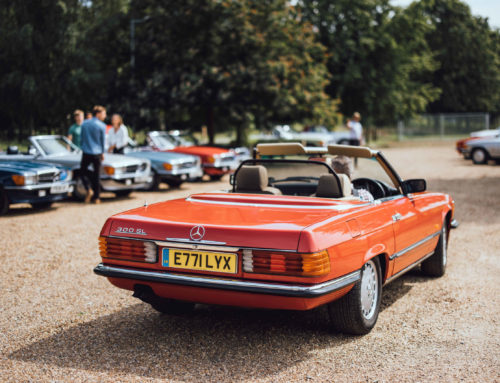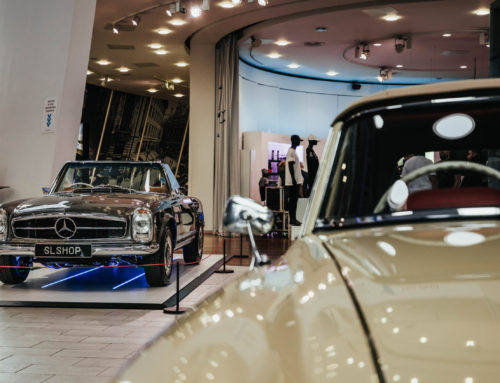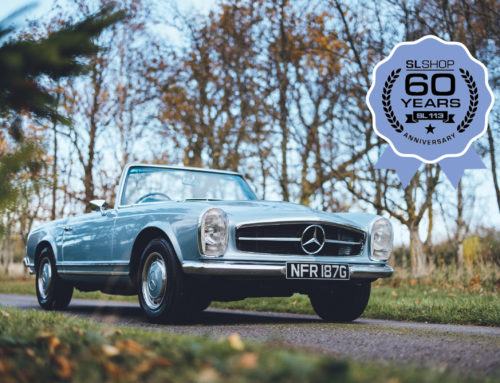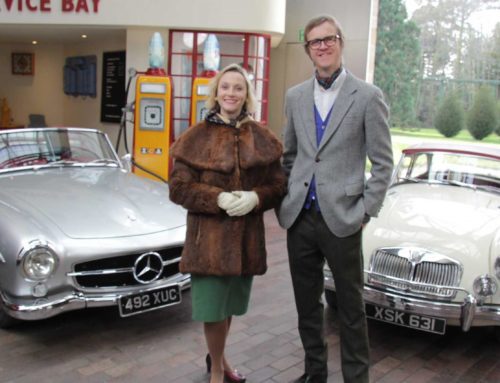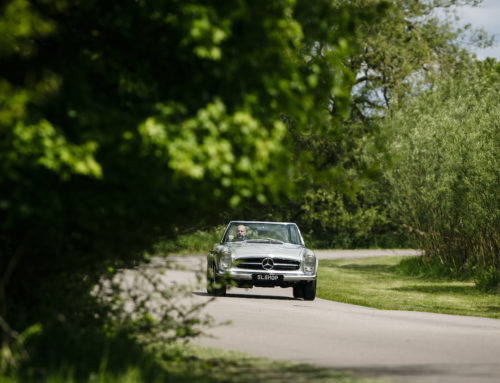The Mercedes R230 SL might’ve slipped under the radar for many years, but it’s safe to say the car’s most definitely an attainable modern classic now. As Mercedes-Benz brought in the new SL in the early noughties, its metal-folding roof was a first for the SL line, and the move away from Bruno Sacco’s magical design of the R129 was pretty apparent, too. As critics, commentators, and most importantly, those who bought and lived with the R230 will agree, it was worthy of the SL monicker. Now as Mercedes-Benz, or rather Mercedes-AMG, rolls its sleeves to despatch the latest SL, we thought it’d be a great idea to take a look at the R230 — a car with which Mercedes-Benz made monumental progress.
Not just a great, abundantly powerful engine, the Mercedes R230 was also bestowed with features that made the SL way ahead of its time. It was positioned as a top-spec luxury GT, which means the inclusion of launching a car loaded to the gills was unsurprising. Mercedes-Benz didn’t just stop there, though. From leather and memory seats, automatic climate control to the electrically adjustable steering wheel, there was something to be amazed by, even if you were a regular in the segment. In addition to that, the R230 served as an undeniably important platform for Merc to showcase highly futuristic tech. This included brake-by-wire tech (SBC) that operates through electrical signals and not hydraulics, Active Body Control suspension that’s electronically controlled and aids the ride quality while keeping a check on things like body roll, and of course, a revolutionary metal roof — a first for the SL — that could be folded in just 16 seconds; the list just doesn’t end there.

Mercedes-Benz R230 SL History
The story began with the V8-engined SL500 brought into the UK market in 2002, followed by another V8-engined but more focussed SL55. As the market began to appreciate the new SL, Mercedes-Benz brought in what’s considered to be one of the best ways to enjoy everyday Mercedes R230 SL ownership, the V6-engined SL350 available in the UK from 2003. But that’s hardly where the range stopped; the R230’s appeal was further widened with the introduction of V12-engined SL600.
The intermediate update in 2006 brought along engine and gearbox improvements, making the R230 SL a much more rounded package. Mercedes-Benz began galvanising cars from 2004 or so onwards, making sure that the SL would fare better in the long run. It was also during this update that the SL500 got a newly developed 5.5-litre engine, making the non-AMG car even quicker. Similar was the case with the new SL350. A 7-speed automatic gearbox was now standard whereas one could also opt for a 7-speed 7G-TRONIC Sport gearbox, which was even quicker — and as the name says, it was positioned as the more sporting alternative to changing gears manually.
And before you knew it, Mercedes-Benz introduced the thoroughly updated mid-life facelift in 2008. The improvements made with the 2006-onwards examples were taken to another level, but the very cool quad headlamps were gone. Nevertheless, the SL facelift looked meaner, a bit more purposeful, even, and got mechanical updates. A new top of the range SL65 made its way to the range, too, with equally top-drawer specs: 670 hp and 1000 Nm — quite possibly enough torque one would require to set an imbalance in the solar system.
For nearly a decade, the Mercedes SL R230 comfortably sat where a lacklustre model wouldn’t just cut it. And following its departure from the market, the car’s appeal didn’t just diminish. In fact, as many would confirm, it has become quite the venerable modern classic now. There’s a wide variety of models to choose from, some spot-on with whatever they offer while some would require you to exercise caution.
On the verge of sounding repetitive, it’s important to mention (again) that the R230 brought along many great features. The first and the easiest to make out was the inclusion of a rigid, metallic folding roof. One press and it would fold down in just 16 seconds. There was also the DISTRONIC intelligent cruise control system, Active Body Control suspension, COMAND system which allowed occupants to interact with the onboard computers in an entirely new way, and TELEAID which would automatically summon the emergency services in an unfortunate event of a crash. And that wasn’t all; the usual suite of luxury features can’t be ignored, either. It mightn’t make for a great pub quiz anymore, but in 2002, some of the standard inclusions were worth noticing. And if one would run out of things to boast about, there was always the brake-by-wire tech, or in Mercedes-Benz’s words, Sensetronic Brake Control.
R230 SL: Common Issues
The R230 did come with its share of niggles, too, and buying it from a reputed seller will go a long way in ensuring that there are no nasty surprises. Do check for warranty and history, to see if any repair has been carried out under Mercedes-Benz warranty.
Some of the common issues included rusting, which was a bigger problem with pre-galvanised cars. Water could also leak into the boot through the roof, so that needs to be checked. This is down to the roof design. As the roof stowage lid came up, the seals stand the chance of coming apart. Mercedes-Benz tried to rectify this by replacing the seals and using a specific glue to bond them strongly.
If the Active Body Control system malfunctions, it can lead to a fairly heavy repair bill. This is why many owners opted for the SL350 (which didn’t get ABC as standard fitment), and the resultant reduction in weight did mean the performance difference between the V8 and the V6 wasn’t as huge in everyday driving as one would expect. The ABC Pulsation Damper would fail and cause a noise from the engine bay, often sounding like a bearing and causing vibration through the steering. There can also be issues which cause low oil in the ABC reservoir, and it’s imperative that one checks the ABC oil levels when the engine’s running. Other commons issues include those related to the 7-speed gearbox, which can go into limp mode if the conductor plates or the rpm sensors fail. The hydraulic suspension would often fail and when mended, technicians would need to carry a ‘rodeo’ to make it work properly! The SBC brake-by-wire system had a shelf life, and if a replacement is required (a blue warning pops up on the dashboard), Mercedes-Benz would only replace it if the car has a full-service history.
Mercedes R230 SL: Which one to buy?
Mercedes-Benz sold a handsome chunk of SL350s, which means not only are they more attainable as a used car, part availability isn’t going to be a huge issue. The other thing that makes the V6-engined R230 Mercedes a great car to own and run is that with each update it’s got better and the difference between it and the larger V8-engined examples has come down considerably as far as driving without breaking the law goes. Plus, it goes without saying that maintaining the 350 is likely to be an easier affair than others. Having said that, for those after an outright performance, the AMG examples will suffice. Apart from the performance gain, there’s also a handsome difference between the maintenance and runnings of regular and AMG models, and one needn’t forget that.
While the aforementioned will give you a good idea on what to look at, here are a few pointers to help recapitulate. Water-related damage is easy to spot. Do check the roof and the spare wheel well. The latter is where the centre locking module is located, so it’s crucial that water doesn’t get there. The roof is an easy and obvious target. Do check below the rear screen; if the seals are cracked or if corrosion is present, the panel will to be repaired or replaced. Christmas-tree dash is a clear sign of water damage, too. CAN systems, which were control units that would interact with each other for various car functions, can also be affected by water damage, which eventually leads to the car losing many functions.
The R230 SL is the easiest way to get into SL ownership. It mightn’t have the same strength as its predecessors — with Mercedes focussing on roof engineering, for instance, and letting the brand heritage take the back seat — but it can still offer a lot of great, enjoyable motoring. There are many cars to choose from, given the large production volume, but one needs to cautious. It, without a doubt, has both the drivetrain and styling working in its favour, but it remains to be seen if the complex mechanisms stand the test of time…
Among all that’s available, we’d suggest looking at the last, final years of production — 56 – 58 plates in the UK. The SL500 can be a great holiday/weekend car, for someone with a penchant for speed. If you want a performance-orientated roadster, it fits the bill well. But if you’re after an SL that you can use more regularly, it’s the SL350 that gets our vote. It’s simpler, has better fuel economy, and there are many to choose from, since Mercedes-Benz produced and delivered a significant number of these.
Share With Your Fellow Enthusiasts
The Mercedes R230 SL might’ve slipped under the radar for many years, but it’s safe to say the car’s most definitely an attainable modern classic now. As Mercedes-Benz brought in the new SL in the early noughties, its metal-folding roof was a first for the SL line, and the move away from Bruno Sacco’s magical design of the R129 was pretty apparent, too. As critics, commentators, and most importantly, those who bought and lived with the R230 will agree, it was worthy of the SL monicker. Now as Mercedes-Benz, or rather Mercedes-AMG, rolls its sleeves to despatch the latest SL, we thought it’d be a great idea to take a look at the R230 — a car with which Mercedes-Benz made monumental progress.
Not just a great, abundantly powerful engine, the Mercedes R230 was also bestowed with features that made the SL way ahead of its time. It was positioned as a top-spec luxury GT, which means the inclusion of launching a car loaded to the gills was unsurprising. Mercedes-Benz didn’t just stop there, though. From leather and memory seats, automatic climate control to the electrically adjustable steering wheel, there was something to be amazed by, even if you were a regular in the segment. In addition to that, the R230 served as an undeniably important platform for Merc to showcase highly futuristic tech. This included brake-by-wire tech (SBC) that operates through electrical signals and not hydraulics, Active Body Control suspension that’s electronically controlled and aids the ride quality while keeping a check on things like body roll, and of course, a revolutionary metal roof — a first for the SL — that could be folded in just 16 seconds; the list just doesn’t end there.

Mercedes-Benz R230 SL History
The story began with the V8-engined SL500 brought into the UK market in 2002, followed by another V8-engined but more focussed SL55. As the market began to appreciate the new SL, Mercedes-Benz brought in what’s considered to be one of the best ways to enjoy everyday Mercedes R230 SL ownership, the V6-engined SL350 available in the UK from 2003. But that’s hardly where the range stopped; the R230’s appeal was further widened with the introduction of V12-engined SL600.
The intermediate update in 2006 brought along engine and gearbox improvements, making the R230 SL a much more rounded package. Mercedes-Benz began galvanising cars from 2004 or so onwards, making sure that the SL would fare better in the long run. It was also during this update that the SL500 got a newly developed 5.5-litre engine, making the non-AMG car even quicker. Similar was the case with the new SL350. A 7-speed automatic gearbox was now standard whereas one could also opt for a 7-speed 7G-TRONIC Sport gearbox, which was even quicker — and as the name says, it was positioned as the more sporting alternative to changing gears manually.
And before you knew it, Mercedes-Benz introduced the thoroughly updated mid-life facelift in 2008. The improvements made with the 2006-onwards examples were taken to another level, but the very cool quad headlamps were gone. Nevertheless, the SL facelift looked meaner, a bit more purposeful, even, and got mechanical updates. A new top of the range SL65 made its way to the range, too, with equally top-drawer specs: 670 hp and 1000 Nm — quite possibly enough torque one would require to set an imbalance in the solar system.
For nearly a decade, the Mercedes SL R230 comfortably sat where a lacklustre model wouldn’t just cut it. And following its departure from the market, the car’s appeal didn’t just diminish. In fact, as many would confirm, it has become quite the venerable modern classic now. There’s a wide variety of models to choose from, some spot-on with whatever they offer while some would require you to exercise caution.
On the verge of sounding repetitive, it’s important to mention (again) that the R230 brought along many great features. The first and the easiest to make out was the inclusion of a rigid, metallic folding roof. One press and it would fold down in just 16 seconds. There was also the DISTRONIC intelligent cruise control system, Active Body Control suspension, COMAND system which allowed occupants to interact with the onboard computers in an entirely new way, and TELEAID which would automatically summon the emergency services in an unfortunate event of a crash. And that wasn’t all; the usual suite of luxury features can’t be ignored, either. It mightn’t make for a great pub quiz anymore, but in 2002, some of the standard inclusions were worth noticing. And if one would run out of things to boast about, there was always the brake-by-wire tech, or in Mercedes-Benz’s words, Sensetronic Brake Control.
R230 SL: Common Issues
The R230 did come with its share of niggles, too, and buying it from a reputed seller will go a long way in ensuring that there are no nasty surprises. Do check for warranty and history, to see if any repair has been carried out under Mercedes-Benz warranty.
Some of the common issues included rusting, which was a bigger problem with pre-galvanised cars. Water could also leak into the boot through the roof, so that needs to be checked. This is down to the roof design. As the roof stowage lid came up, the seals stand the chance of coming apart. Mercedes-Benz tried to rectify this by replacing the seals and using a specific glue to bond them strongly.
If the Active Body Control system malfunctions, it can lead to a fairly heavy repair bill. This is why many owners opted for the SL350 (which didn’t get ABC as standard fitment), and the resultant reduction in weight did mean the performance difference between the V8 and the V6 wasn’t as huge in everyday driving as one would expect. The ABC Pulsation Damper would fail and cause a noise from the engine bay, often sounding like a bearing and causing vibration through the steering. There can also be issues which cause low oil in the ABC reservoir, and it’s imperative that one checks the ABC oil levels when the engine’s running. Other commons issues include those related to the 7-speed gearbox, which can go into limp mode if the conductor plates or the rpm sensors fail. The hydraulic suspension would often fail and when mended, technicians would need to carry a ‘rodeo’ to make it work properly! The SBC brake-by-wire system had a shelf life, and if a replacement is required (a blue warning pops up on the dashboard), Mercedes-Benz would only replace it if the car has a full-service history.
Mercedes R230 SL: Which one to buy?
Mercedes-Benz sold a handsome chunk of SL350s, which means not only are they more attainable as a used car, part availability isn’t going to be a huge issue. The other thing that makes the V6-engined R230 Mercedes a great car to own and run is that with each update it’s got better and the difference between it and the larger V8-engined examples has come down considerably as far as driving without breaking the law goes. Plus, it goes without saying that maintaining the 350 is likely to be an easier affair than others. Having said that, for those after an outright performance, the AMG examples will suffice. Apart from the performance gain, there’s also a handsome difference between the maintenance and runnings of regular and AMG models, and one needn’t forget that.
While the aforementioned will give you a good idea on what to look at, here are a few pointers to help recapitulate. Water-related damage is easy to spot. Do check the roof and the spare wheel well. The latter is where the centre locking module is located, so it’s crucial that water doesn’t get there. The roof is an easy and obvious target. Do check below the rear screen; if the seals are cracked or if corrosion is present, the panel will to be repaired or replaced. Christmas-tree dash is a clear sign of water damage, too. CAN systems, which were control units that would interact with each other for various car functions, can also be affected by water damage, which eventually leads to the car losing many functions.
The R230 SL is the easiest way to get into SL ownership. It mightn’t have the same strength as its predecessors — with Mercedes focussing on roof engineering, for instance, and letting the brand heritage take the back seat — but it can still offer a lot of great, enjoyable motoring. There are many cars to choose from, given the large production volume, but one needs to cautious. It, without a doubt, has both the drivetrain and styling working in its favour, but it remains to be seen if the complex mechanisms stand the test of time…
Among all that’s available, we’d suggest looking at the last, final years of production — 56 – 58 plates in the UK. The SL500 can be a great holiday/weekend car, for someone with a penchant for speed. If you want a performance-orientated roadster, it fits the bill well. But if you’re after an SL that you can use more regularly, it’s the SL350 that gets our vote. It’s simpler, has better fuel economy, and there are many to choose from, since Mercedes-Benz produced and delivered a significant number of these.
Share With Your Fellow Enthusiasts
More from Journal
CARE
THE ULTIMATE CERTIFIED SERVICING INVESTMENT PLAN
Your ownership journey matters to us, which is why we have created a simple certified servicing investment plan, tailored to your individual needs and aspirations.
Start investing today and our dedicated CARE team will work with you to increase the value and enjoyment you receive from your vehicle.

STAY IN TUNE WITH SLSHOP MOMENTS
As part of SLSHOP’s community of enthusiasts, you’ll be the first to hear about events and tours, key product offers, exciting stories from owners around the world and of course… our latest additions to the showroom. So, be the first to know and you might just sneak a car on your driveway or take your car’s condition to new heights with our exclusive replacement parts.
Or, visit SLSHOP Journal

